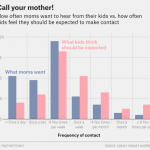A bit of housekeeping before the Quick Takes: This blog is one of five nominees for the About.com Award for Favorite Atheist Blog in 2011. You can vote once per day, and I would really appreciate it if you did.
And speaking of the “Please vote for me” refrain, perhaps you’re aware of the Chinese documentary of the same name? This movie follows a Chinese class of 8-year-olds who get to elect their own class monitor, their first experience with participatory democracy. Here’s the trailer:
A discussion of this film served as the preamble to a recent This American Life podcast on kids and politics. It’s well worth listening to (or reading the transcript). The podcast has three acts. The first is set at the Ronald Reagan Presidential Library where a reporter watches successive groups of kids interact with the museums interactive role-play of the invasion of Grenada. The second segment is a conversation between a 14-year-old climate change skeptic (who says she’s open to being convinced otherwise) and an adult scientist. The final section explores an alternative school where a student plebiscite can alter any aspect of the school day. My favorite of these stories is by far the first:
Today’s President Reagan is a blond fifth grader with an athletic build. My guess is he’s a popular kid, but a benevolent one. He seems to take being named leader of the free world in stride, as though it’s the sort of thing that happens to him often. Here’s how it all works. The invasion is broken down into a series of A or B options. For instance, A, have diplomatic talks with Grenada, or B, evacuate the medical students. A, evacuate the medical students, or B, overthrow the Communist government. Each kid gets a vote, but President Reagan has final say.
The President inputs his answer into a dramatic red phone located right next to the jelly bean jar on his desk. Before they start, the kids were told that there aren’t right or wrong answers, but the whole thing’s rigged to make what Ronald Reagan did in 1983 look like the most appealing option. Each time the kids choose to do what he did, a bell goes off as though they’ve won a tropical vacation in Grenada, instead of an invasion.

Apropros of nothing extept its intrisicic delightfulness, this portrait of God as Divine Geometer from the Bible moralisée comes via a friend on facebook.
The recent gay marriage debate on this blog has wrapped up, though I’m still taking questions on or about the topic. As a nice little coda, you might want to check out J.R. Kirk’s post on the strange dynamic between the church and the State on marriage.
We have lived so long with pastors saying, “.. and through the power vested in me by the State of _____…” that we don’t even realize how weird that is.
Can you imagine Jesus performing a wedding and saying, “through the power invested in me by Caesar Augustus and his Governor Pontius Pilate…”?
The church… can continue to serve as the state’s emissary and thereby bind itself to marry only within the confines of secular law rather than the conscience of its people.
It can keep doing it, but attempt to raise up a change in state law so that civil ceremonies are for the state’s purposes and church weddings are for God’s purposes. (This is the way it worked in Holland when my grandparents got married: one set of paperwork and vows for the state, the other in the church.)
Or, pastors could just stop marrying people on the state’s behalf.
Agreeing with Kirk doesn’t necessitate that churches (institutionally) or parishoners (individually) would cease to have an interest in how legal, secular marriage was defined. Just like atheist paternalists like me, Christians could think the coercive power of the state could be used to help people make the choices they would make if they had all the facts.
So we’re still likely to clash, but both sides benefit. The church gets to put a firewall between sacramental and secular marriage and I get to have a fight that’s all talking about policy outcomes, not religious freedom.

I have totally been spending too much time futzing around with NukeMap, which lets you overlay different types of warheads on cities to see how far out the radii of destruction extend. I was pleasantly surprised to find out that, even though I live in DC, a number of nuke designs would not put me in danger of radiation poisoning or flashover.
The best part of this map app is getting to contrast the different designs of bombs and how they work. Some scatter radioactive material much farther, while others send out particularly destructive shock waves. The different impacts don’t scale up together. Now I’m in a research-y mood to find out how design is linked to these variations.
For more Quick Takes, visit Conversion Diary!
















